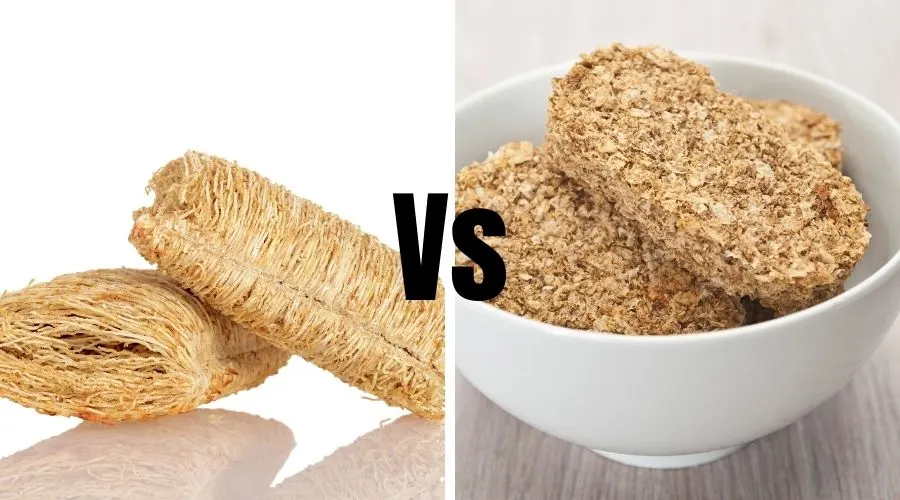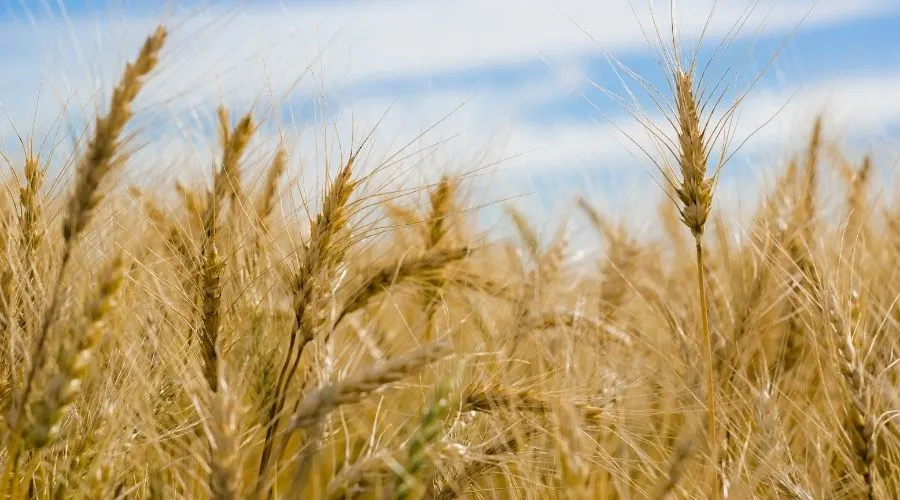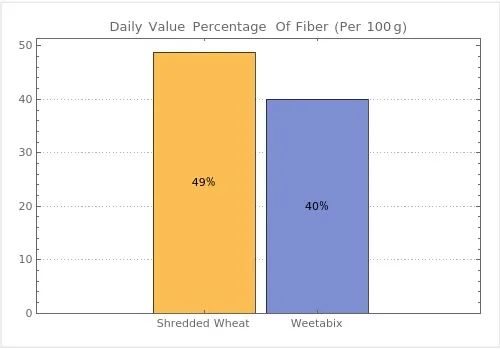How do Shredded Wheat and Weetabix, two popular breakfast cereals, stack up against each other in the realms of nutrition, taste, and overall health benefits? Both cereals have long been staples on breakfast tables, offering quick, easy, and nutritious starts to the day with their own unique textures and flavors.
This article will delve into a comprehensive comparison between the two, exploring their nutritional profiles, ingredient lists, and the various health implications of including them in your diet, aiming to assist you in making an informed choice for your morning meal.
Also in This Article
In a hurry? Use the links below to skip to the section you need:

Shredded Wheat Vs Weetabix – Compared
In this section, I’ll go through each nutrition category and compare both Shredded Wheat and Weetabix, weight for weight.
The nutritional information I’ve used is based on figures taken from pack nutrition tables and is correct at the time of writing.
Best for Calories
To find out the actual results on which cereal is best for calories, they need to be compared weight for weight.
The results show that Shredded Wheat is lower in calories than Weetabix, although there are only two calories between each one.
| Shredded Wheat Calories per 100g | Weetabix Calories Per 100g |
| 360kcal | 362kcal |
A serving of Shredded Wheat and Weetabix is classed as two biscuits per portion. Shredded Wheat biscuits weigh more than Weetabix, which means a serving of Shredded Wheat contains more calories than Weetabix, although weight for weight, they’re almost the same.
| Shredded Wheat calories per Serving (45g) | Weetabix Calories Per Serving (37.5g) |
| 162kcal | 136kcal |
It’s important to note that both kinds of cereal provide a low-calorie, healthy breakfast per serving, whichever one you choose.
Best for Carbs & Sugar Content
If you’re keeping an eye on your calorie intake or watching your sugar intake, then weight for weight Shredded Wheat is lower in carbs and sugar, although both are low in sugar compared to other breakfast cereal choices.
When it comes to carbs, there’s only a difference of 2g between them, so the difference is nominal.
| Biscuit Type | Carbohydrates (Per 100g) | Of Which Sugars (Per 100g) |
| Nestle Shredded Wheat | 66.7g | 0.7g |
| Weetabix Original | 69g | 4.2 |
Although Shredded Wheat contains fewer carbs and sugar per weight, a serving of two Weetabix biscuits contains fewer carbs than two Shredded Wheat Biscuits but only because it weighs less.
A serving of Weetabix contains more sugar than a serving of Shredded Wheat, but again they’re relatively low in sugar compared to many other breakfast kinds of cereal.
| Biscuit Type | Carbohydrates | Of Which Sugars |
| Nestle Shredded Wheat (Per 45g Serving) | 30g | 0.3g |
| Weetabix Original (Per 37.5g Serving) | 26g | 1.6g |
Best for Fiber Content

People tend to choose either Shredded Wheat or Weetabix biscuits for breakfast because they’re healthier than other cereals and mainly because they’re high in fiber which is excellent for digestion and gut health.
When it comes to fiber, both Shredded Wheat and Weetabix are both a high fiber choice, but Shredded Wheat contains more fiber per 100g and per serving.
| Shredded Wheat Fiber per 100g | Weetabix Fiber Per 100g |
| 12.2g | 10g |
| Shredded Wheat Fiber per Serving (45g) | Weetabix Fiber Per Serving (37.5g) |
| 5.5g | 3.8g |

The recommended daily intake of fiber on a 2,000 calorie diet is approximately 25g. As shown in the graph, both Shredded Wheat and Weetabix provide a significant portion of the daily fiber requirement, with Shredded Wheat having a slightly higher fiber content.
Best for Fat Content
Weight for weight: Shredded Wheat and Weetabix are very low in fat and saturated fat. When comparing the two, Shredded Wheat is slightly higher in fat, but only by 0.2g per 100g.
| Biscuit Type | Fat (Per 100g) | Of Which Saturates (Per 100g) |
| Nestle Shredded Wheat | 2.2g | 0.5g |
| Weetabix Original | 2g | 0.6g |
| Biscuit Type | Fat | Of Which Saturates |
| Nestle Shredded Wheat (Per 45g Serving) | 1g | 0.2g |
| Weetabix Original (Per 37.5g Serving) | 0.8g | 0.2g |
Best for Flavor and Texture
When it comes to which is the healthiest between Shredded Wheat and Weetabix, Shredded Wheat is the clear winner so far, but which is the best to eat?
I did a poll on some of my friends and family to determine which they prefer to eat for both flavor and texture, regardless of health benefits.
The winner from my poll was Weetabix for one main reason – texture; although people like the flavor of both Shredded Wheat and Weetabix, many prefer the softer texture of Weetabix when it’s covered in milk.
Flavor and texture preferences are up to the individual, and this was only one small poll, so when it comes to your choices, you can judge which is best!
Which is the Best? – The Results!
So the verdict is in, and the comparisons have been made, and when it comes to the lowest in calories, carbs, sugar while having the highest fiber content, shredded wheat is the winner.
However, it’s important to point out that both Shredded Wheat and Weetabix are a healthy alternatives to many kinds of breakfast cereal, and in many cases, the differences between the two are negligible.
| Category | Winner (Shredded Wheat or Weetabix) |
| Best for Calories | Shredded Wheat (by 2kcal) |
| Best for Carbs & Sugar | Shredded Wheat |
| Best for Fiber | Shredded Wheat |
| Best for Fat | Weetabix |
| Best for Flavor & Texture | Weetabix |
More Shredded Wheat Vs Weetabix FAQ’s
Below are some of the most frequently asked questions for this topic, in case there’s anything else you need to know:
Yes, both Shredded Wheat and Weetabix contain Whole Wheat, which is high in fiber and excellent for digestion and gut health.
Shredded Wheat and Weetabix both make a healthy breakfast because they’re low in sugar, saturated fat, and high in fiber. Both come in at less than 250 calories (in kcal) per serving when eaten with half-fat milk.
Related Articles
I hope this article has helped you to find the information you were looking for; you might also find the following articles helpful too:
Weetabix Servings, Calories & Weights (in Charts)
Shredded Wheat Servings, Calories & Weights (in Charts)
Chicken Nuggets Vs. Plant-Based Nuggets
